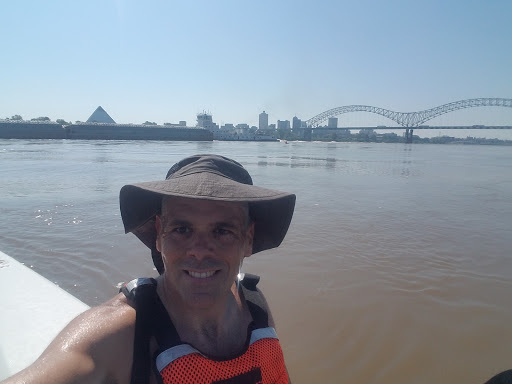William T. Endicott spent many years as the coach of the U.S. whitewater team that competed internationally in slalom and wildwater racing. On his watch, the U.S. team became a medal-winning force in a sport that had long been dominated by European nations.
Over the years, Endicott wrote a series of books about the physical and mental aspects of canoe and kayak racing. I own them all, and they were a huge influence on my ideas of why I participate in paddlesports and what it means to be a lifelong athlete.
Endicott has written a new essay in which he looks back on his experiences. The essay is posted on the Potomac Whitewater Racing Center website. The PWRC, formerly known as the Bethesda Center of Excellence, and before that the Canoe Cruisers Association Slalom Division, is Endicott's home club and produced many of this country's most successful whitewater racers.
Most of this new essay consists of ideas Endicott expressed in his earlier writings, so there's not a whole lot that's entirely new to me. "Fascination with the process" is a concept that pervades practically every Endicott piece I've ever read. But reading this essay has provided a shot of inspiration in the current challenging times.
At one point in the essay Endicott quotes the Greek philosopher Epictetus: "Man is not disturbed by events, but by his opinion of the events." He goes on to say, "[The quote] reminded me to focus on the positive, what to do about the situation, and not just to wallow in the negative."
That sums up my own reaction to the COVID-19 pandemic. Back in the spring, when the shock of the viral threat was still fresh, I knew it was important not to let this be a "wasted" year, that I should spend it on projects and activities that I can look back on with satisfaction later.
I'm not going to pretend that I have successfully located the key to inner peace. There have been moments when I have allowed the negative aspects of the pandemic--the cancelation of so many events I look forward to, the inability to travel, the feelings of isolation as I sit home alone--to plunge me into despair.
But in spite of that, I have kept moving, both in and out of the boat. In my non-athletic life, the pandemic has dampened demand for my woodworking services, so I've used the extra time to tackle home-improvement projects that had needed doing for years. Some of these projects are rather ambitious, messy, and intimidating, and that's why I'd put them off as long as I had, but now that I've dived in I'm slowly producing some satisfying results.
As far as paddling goes, the pandemic has more or less wiped out my race season. There are a few races going on here and there, but so far I've been skittish about hitting the road. Instead, I've kept up my paddling routine here at home. With no races to do, I've done practically no "work" workouts (timed intervals and the like), but I've eagerly pursued "play" workout opportunities and worked a lot on skills and technique, putting together a year in which my volume and intensity of training are not much shy of normal.
The experience has reminded me that racing is not the primary reason that I paddle. I've said in years past that the real fulfillment comes from the routine of going down to the river a few times each week, where I enjoy some time in the outdoors, get some exercise, and look for ways to paddle my boat a little bit better. That's what Bill Endicott calls "fascination with the process."
This week Joe and I did our regular loop of the harbor on Tuesday. And then yesterday I paddled for 70 minutes. After warming up and doing three 8-stroke sprints in the harbor, I paddled down the Mississippi to the Harahan Bridge and came back up along the Arkansas bank. There was a barge rig coming downriver as I was ferrying back to the Tennessee side, so I grabbed a quick "play" workout on its wake. The waves were moving a bit too fast for me to get any kind of lengthy ride, but my attempts amounted to a good set of hard sprints.
Just in case you're reading this and would like to check out Endicott's writing yourself: I typed "William T. Endicott" into the search field on Amazon, and discovered that quite a few of his books can still be had. His older books on whitewater racing are now out-of-print collector's items, and the copies on Amazon are rather pricey, but worth the investment for the person who's fascinated by our sport's history. Meanwhile, there's a much more recent book about French slalom world champion Fabien Lefevre, as well as a 2003 book about Endicott's "day job" working on Capitol Hill, An Insider's Guide to Political Jobs in Washington. Wherever you wish to start, you won't be disappointed by the lessons Endicott offers.
For more information on what this blog is about, click here.







